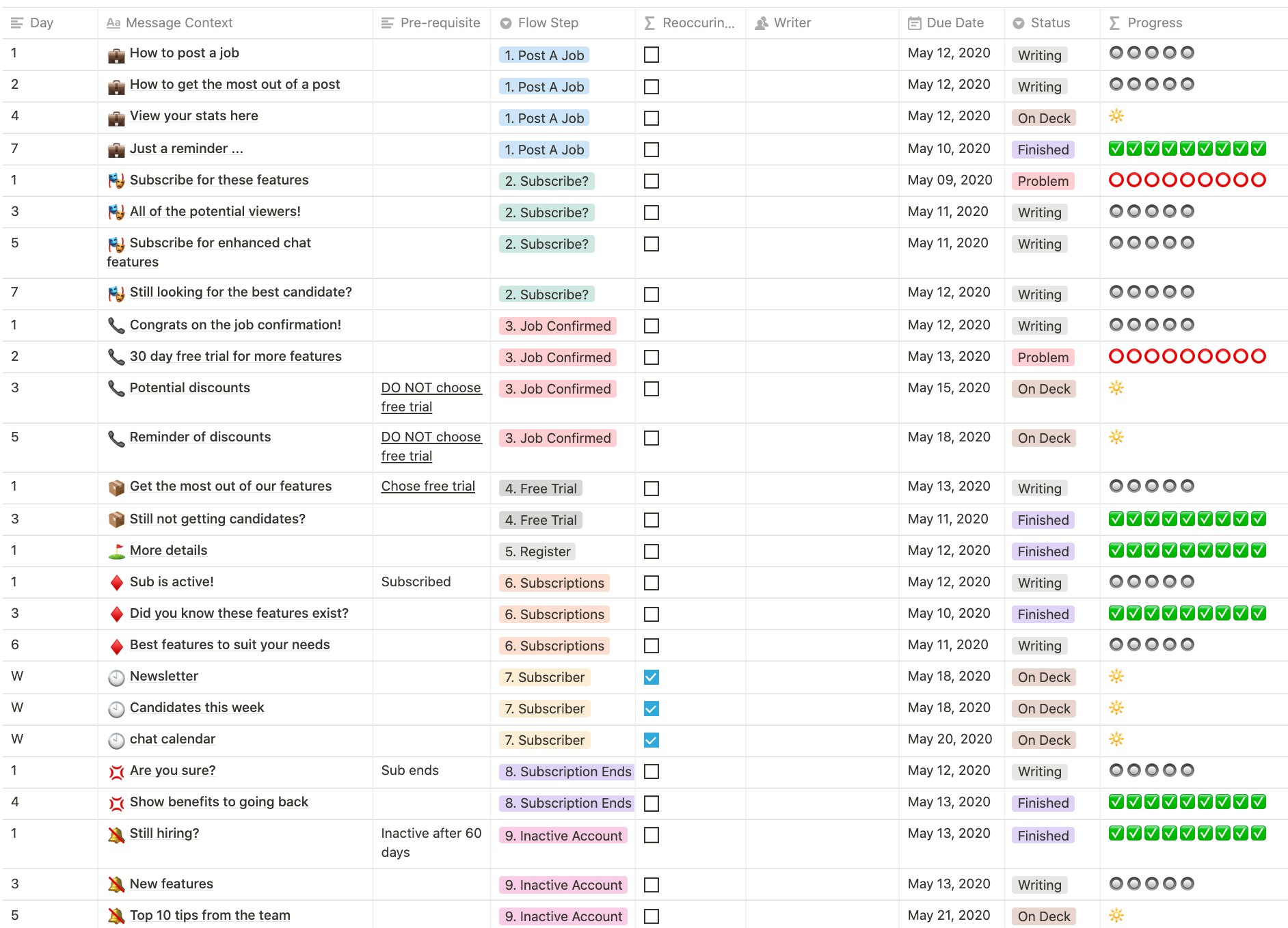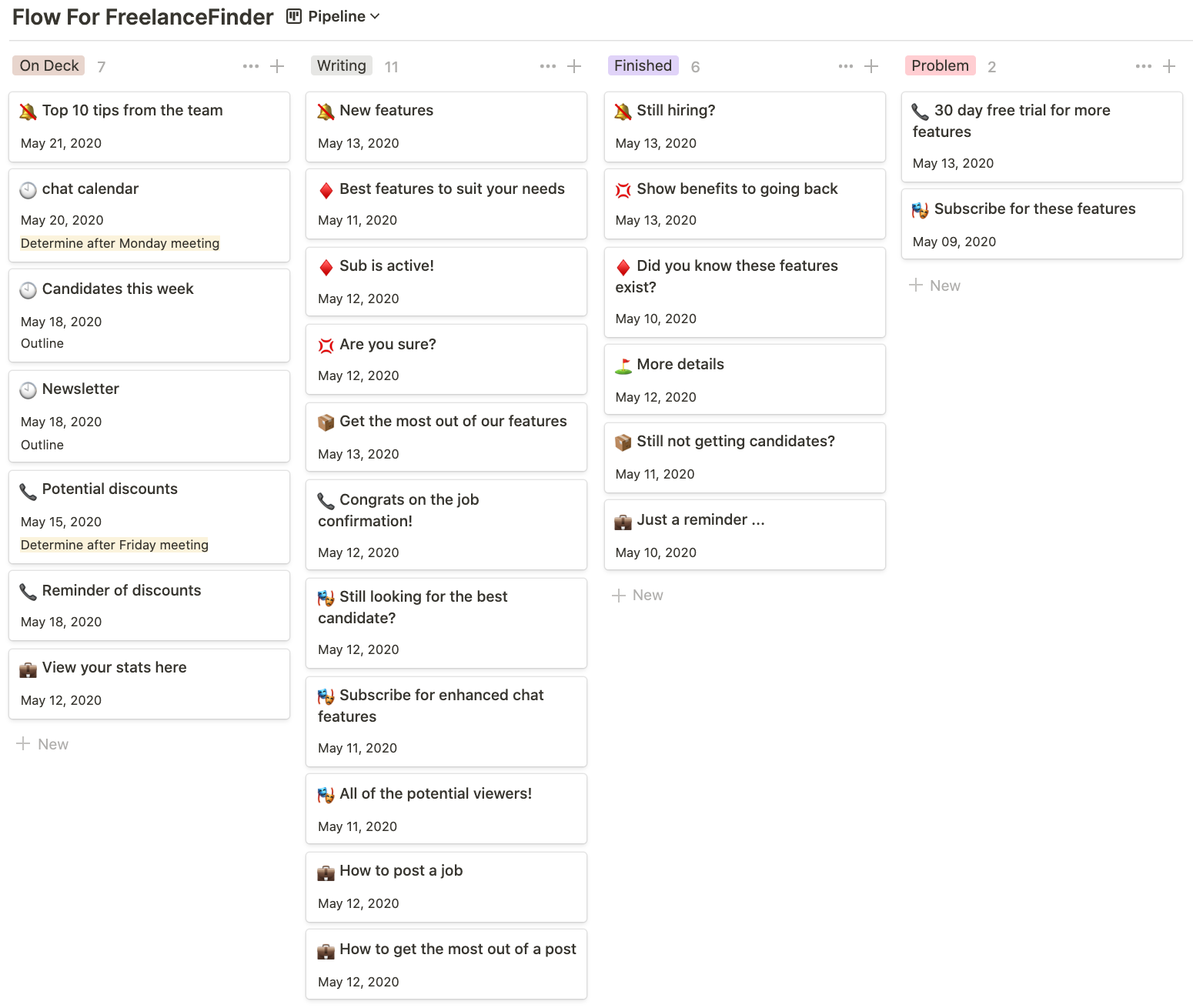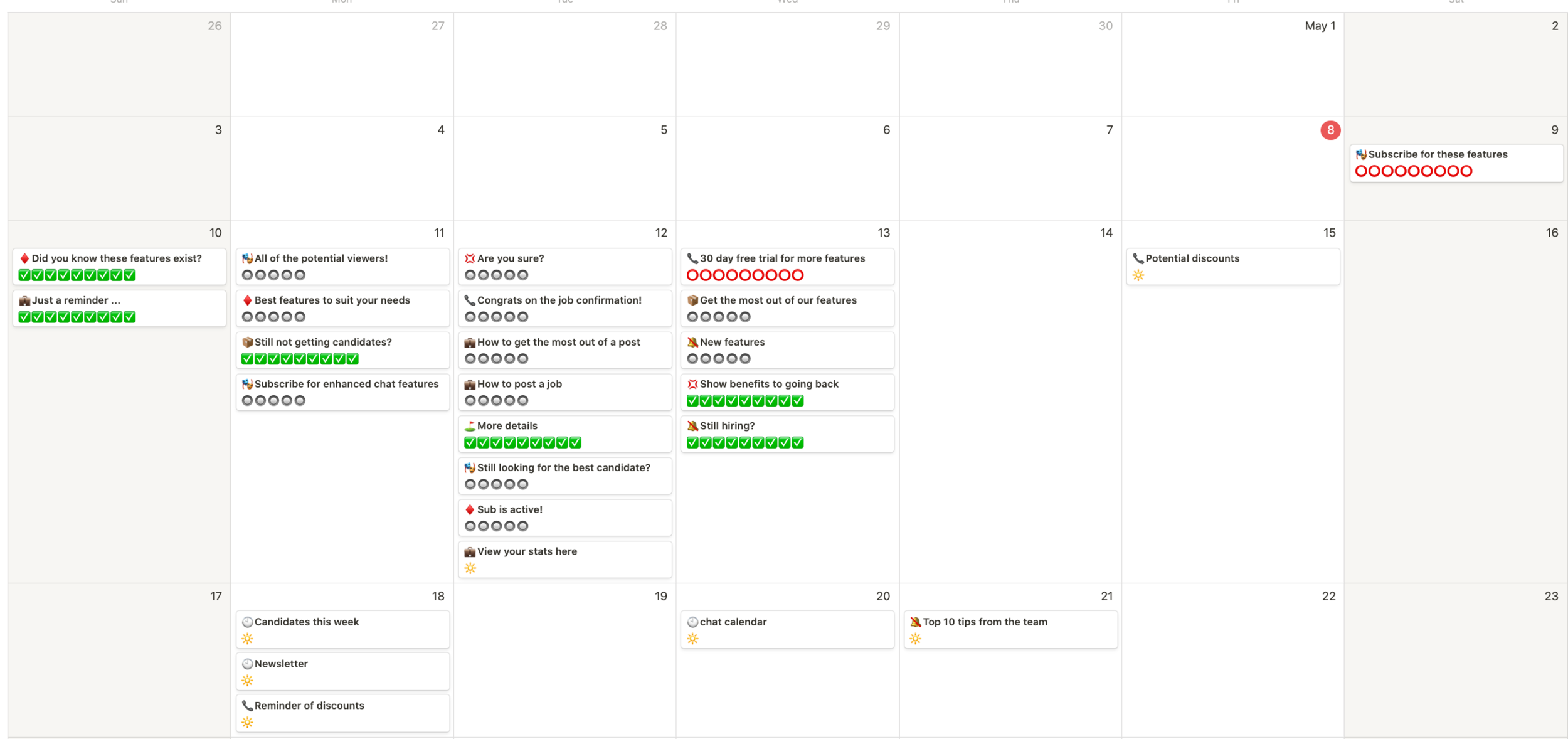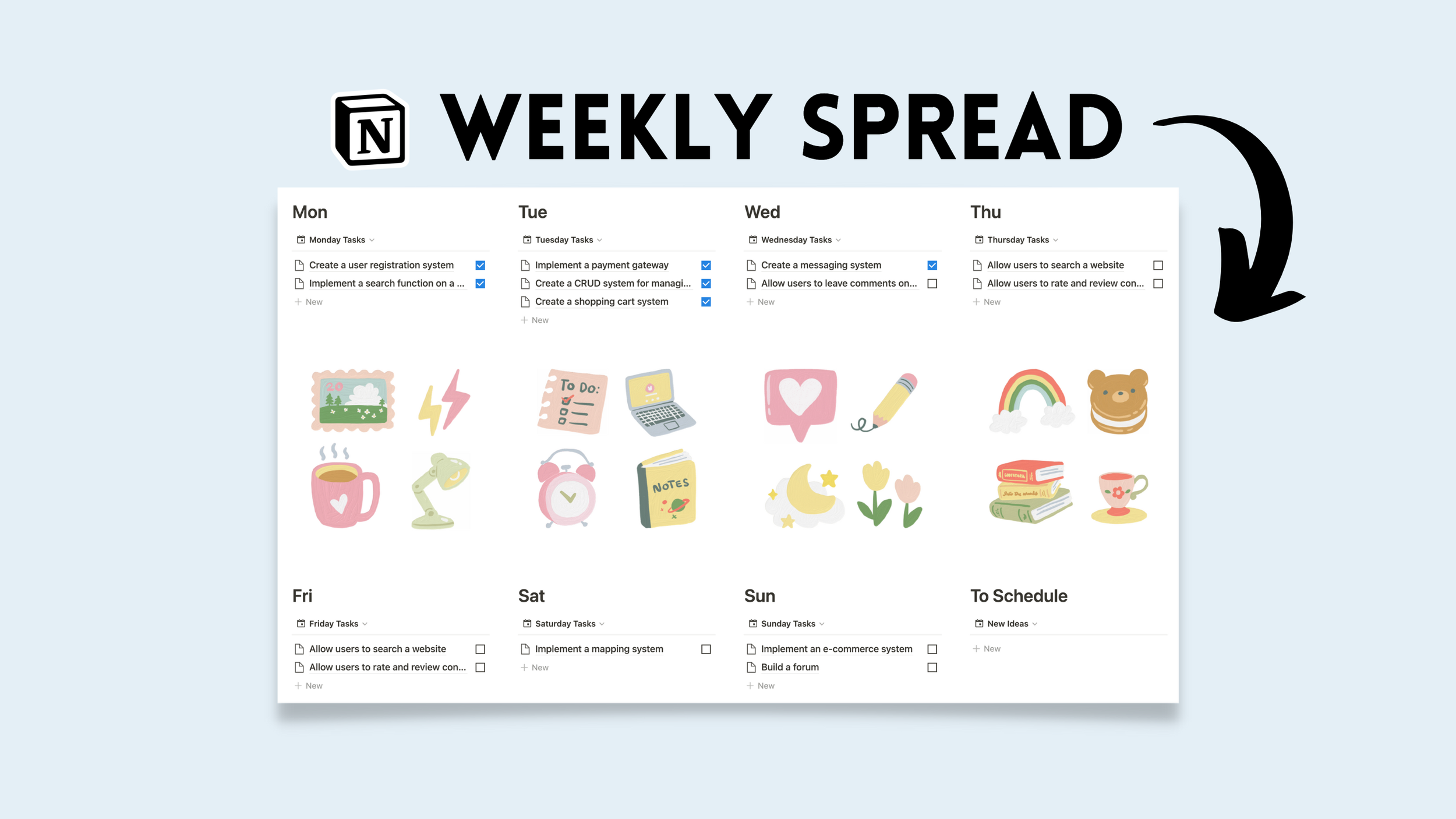🔩 Plan For Action
Notion doesn't currently support mind-mapping or chart flows, however, one can still find a way to transfer a simple flow chart into a database. Below, I have two examples from imaginary apps that are in the first stages of construction for automated emails and/or in-app messages.
These messages will be sent to the customer for potential features, newsletters and other updates from the company. The other example turns the same simple linear flow into a webbed database with the ability to edit and track progress of each element inside, thus turning a brainstorm plan into an actionable database.
Example of Linear Planning in Notion
Click to enlarge
Step 1: The Sketch
Here’s another example for a freelance website. First, is a rough sketch of the auto-message flow by “days after each m.Tag (step) is triggered.”
Step 2: The Linear Database
Click to enlarge
Step 3: The Actionable Database
The days marked in yellow require differentiating from the rest and/or connection with another node in our chart. Let's use different properties to make everything appear more comprehensible and introduce the ability to edit and categorize each message using tags and due dates.
What elements to add via new property (Pre-requisite) →
→ Potential discounts message only sends to those who DO NOT choose the free trial. (Day 2, Job Confirmed)
→ Reminder of discounts message only sends to those who DO NOT choose the free trial. (Day 2, Job Confirmed)
→ Free Trial is determined by free trial confirmation (Day 2, Job Confirmed)
The Outcome



The Properties
Day - Day after triggered flow step message will be sent.
Message Context - Short headline about message.
Pre-requisite - What must happen or NOT happen before message is sent.
Flow step - What step this message is under.
Reoccurring? - Is the message intended to be sent once or weekly/monthly?
Writer - Assigned writer to message
Due Date - When message is due
Status - What stage of workflow is message in? (ie. Writing, On Deck, Finished)
Progress - Takes Status and creates visual progress bar for quick reference in calendar view.





